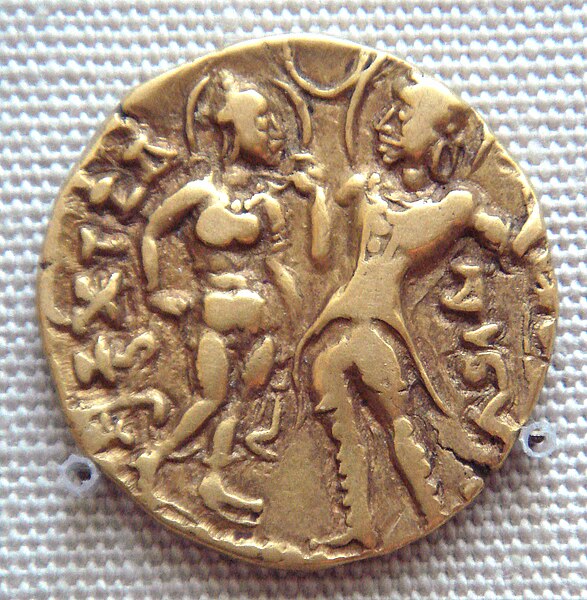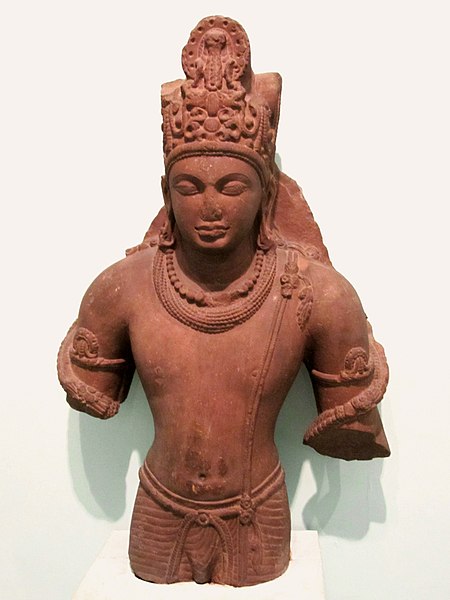The Gupta script was used for writing Sanskrit and is associated with the Gupta Empire of the Indian subcontinent, which was a period of material prosperity and great religious and scientific developments. The Gupta script was descended from Brāhmī and gave rise to the Śāradā and Siddhaṃ scripts. These scripts in turn gave rise to many of the most important Indic scripts, including Devanāgarī, the Gurmukhī script for Punjabi, the Odia script, the Bengali-Assamese script and the Tibetan script.
The Gopika Cave Inscription of Anantavarman, in the Sanskrit language and using the Gupta script. Barabar Caves in Jehanabad Bihar, 5th or 6th century CE.
Gupta script vowel diacritics (Allahabad standard).
Usage examples.
Kushan Empire signet in Gupta Brahmi script, showing Septimius Severus and Julia Domna. The seal reads Damputrasya Dhanguptasya ("[Seal of] Dhangupta son of Dama). 3rd century CE.
The Gupta Empire was an ancient Indian empire on the Indian subcontinent which existed from the early 4th century CE to early 6th century CE. At its zenith, from approximately 319 to 467 CE, it covered much of the Indian subcontinent. This period has been considered as the Golden Age of India by historians, although this characterisation has been disputed by some other historians. The ruling dynasty of the empire was founded by Gupta and the most notable rulers of the dynasty were Chandragupta I, Samudragupta, Chandragupta II, Kumaragupta I and Skandagupta. The 4th-century CE Sanskrit poet Kalidasa credits the Guptas with having conquered about twenty-one kingdoms, both in and outside India, including the kingdoms of Persians, the Hunas, the Kambojas, tribes located in the west and east Oxus valleys, the Kinnaras, Kiratas, and others.
Queen Kumaradevi and King Chandragupta I, depicted on a gold coin
Standing Buddha in red sandstone, Art of Mathura, Gupta period c. 5th century CE. Mathura Museum
Gold coins of Chandragupta II
Sculpture of Vishnu (red sandstone), 5th century CE.




![Kushan Empire signet in Gupta Brahmi script, showing Septimius Severus and Julia Domna. The seal reads Damputrasya Dhanguptasya ("[Seal of] Dhangupta](https://upload.wikimedia.org/wikipedia/commons/thumb/e/e1/Kushan_signet_in_Gupta_Brahmi_script_3rd_century_CE.jpg/490px-Kushan_signet_in_Gupta_Brahmi_script_3rd_century_CE.jpg)



